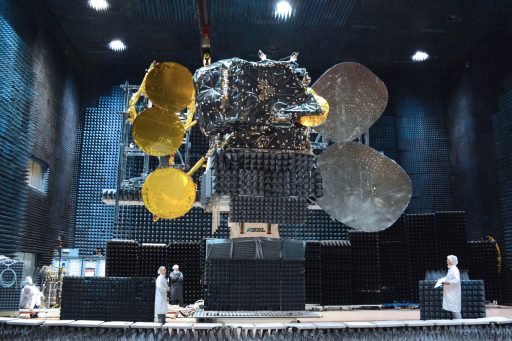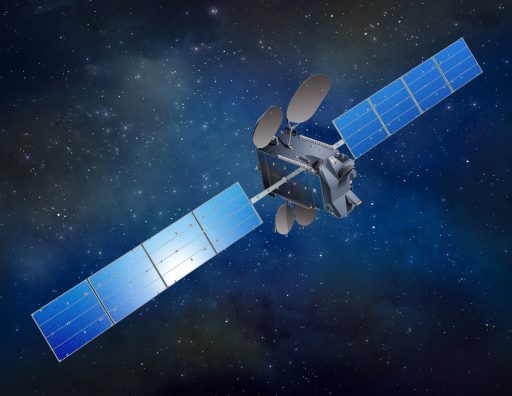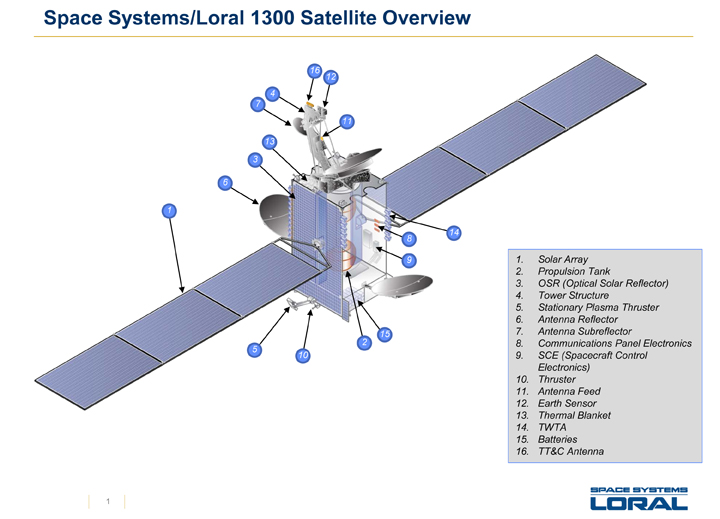Amazonas 5 Satellite

Amazonas 5 is a commercial communications satellite built by California-based Space Systems Loral for operation by Spanish telecommunications provider Hispasat, S.A.
Stationed over South America, Amazonas 5 will employ a Ku- and Ka-Band payload to deliver TV broadcasting services and Internet connectivity to the Latin American countries.
In operation since 1989, Hispasat has operated a number of communications satellites over the Americas, Europe and North Africa from orbital positions at 30° and 61° West, delivering the entire palette of telecommunications services in the commercial and government sectors. Among the services provided by the company is direct-to-home TV broadcasting, carrying over 1,200 channels to more than 30 million homes.

The company’s Hispasat satellites are operated at 31°W to deliver coverage to Europe and Africa, a position inaugurated in 1992 with Hispasat-1A. Satellites flying under the Amazonas designation park at 61°W to deliver services to the Americas and the Caribbean starting with Amazonas 1 launched in 2004. In total, six Hispasat and four Amazonas satellites were launched by the company prior to Amazonas 5 plus two military-use satellites designated Xtar-Eur and Spainsat. The company is also developing Sun Synchronous Satellites for military use in specialized application areas including communications and reconnaissance.
The Amazonas 5 satellite was ordered from Space Systems Loral in December 2014 to replace the Amazonas 4A satellite that suffered a power system malfunction shortly after its 2014 launch which permanently reduced its capacity and shortened its life expectancy. Amazonas 5 provides sufficient capacity to also replace the Amazonas 4B satellite that was canceled after problems with the also Orbital Sciences-built 4A satellite.

For Amazonas 5, Hispasat leverages the high reliability record of the SSL-1300 satellite platform that has become a leading product in the area of Geostationary Telecommunications.
Amazonas 5 is outfitted with a hybrid payload of 24 Ku-Band transponders in use for television distribution to Latin America and Brazil and 34 spot beams in Ka-Band are distributed throughout South and Central America with focus on Brazil and Mexico to deliver Internet connectivity, support corporate networks, and other telecommunications applications. The satellite will carry out its two-pronged mission from the 61°W orbital position and has a planned lifetime of 15 years.
Amazonas 5 weighs in at 5,900 Kilograms and uses a medium-power version of the versatile SSL-1300 satellite platform with a nominal power of 11,500 Watts. SSL-1300 is a flexible satellite platform that can be flown in different configurations to accommodate different communication payloads with a total power of 5 to 18kW.
Using different configurations, LS-1300 satellites can weigh from 2,200 up to 6,700 Kilograms featuring payloads of 12 to 150 transponders.

Through optimizations, the number of transponders that can be accommodated can be increased even further. SSL-1300 was introduced in the late 1980s, but undergoes constant modifications going through a number of revisions over the years.
Two four-panel solar arrays deliver up to 11.5kW of power to a dedicated system that conditions the satellite’s power bus and controls the state of charge of the vehicle’s batteries. Three-axis stabilization and navigation is accomplished by state of the art navigation sensors and reaction wheels.
The satellite is equipped with a chemical propulsion system for orbit-raising and stationkeeping using ~450-490-Newton main engine and a series of attitude control thrusters. LS-1300 also provides the option of an additional electric propulsion system, whether this option is exercised for Amazonas 5 is not known.

